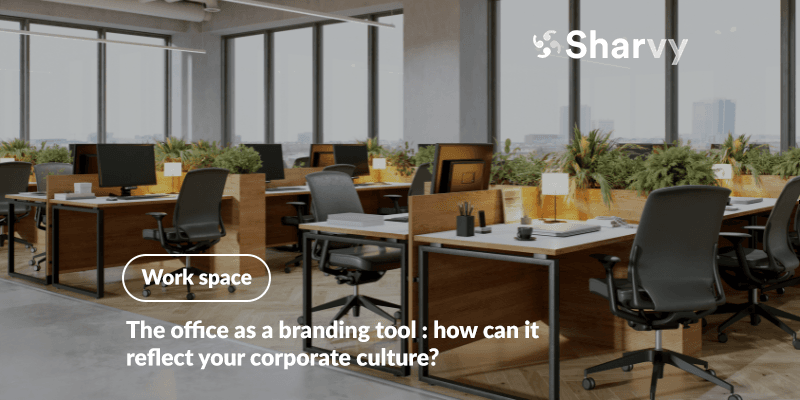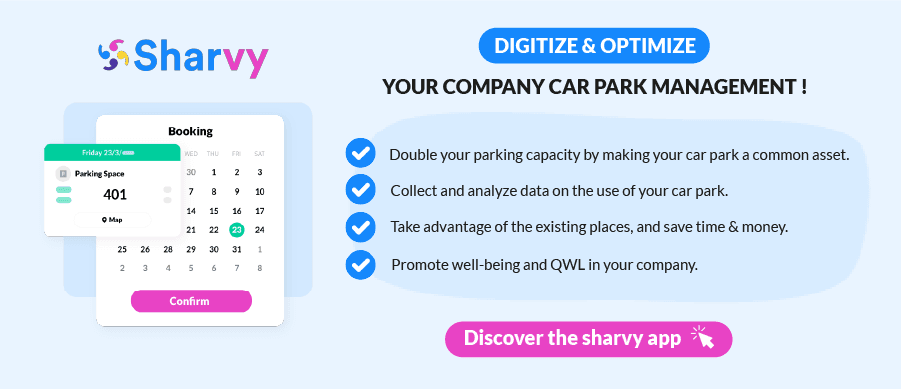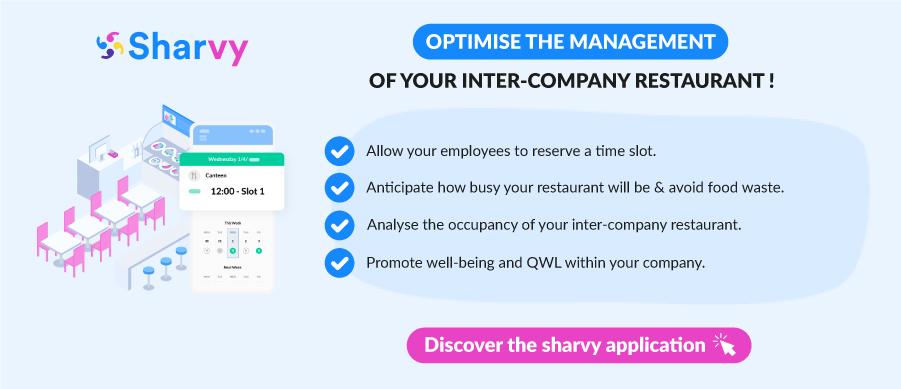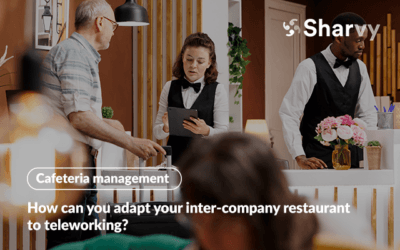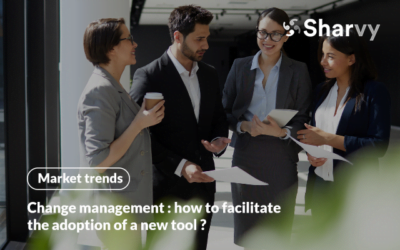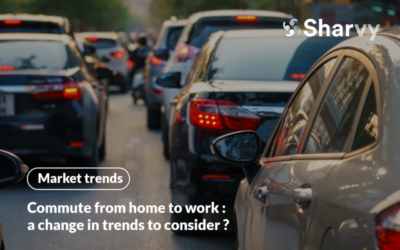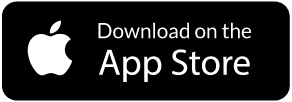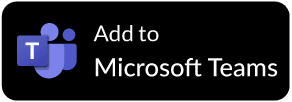Every morning, you look for a parking space in your company car park. Sometimes it’s quick, sometimes not. Once you’re in the building, you sign in, have a coffee, say hello to colleagues, then sit down at your desk and the day begins.
Nothing exceptional in itself.
And yet, through this ordinary journey, your spaces express themselves. They reflect the way you work, your priorities and your values. Without even realising it, your employees and visitors see a part of your identity in your premises.
So the office is more than just a place to work: it’s a powerful branding tool. In this article, we’re going to retrace this daily journey to understand how each space, each design decision, can become a strategic lever for reinforcing your company’s culture! In focus.
The office : a branding tool and showcase for your employer brand?
At a time when discussions are often held behind a screen (with the spread of teleworking), returning to the site takes on a whole new dimension.
Less frequent, but more symbolic. The office becomes a strategic reference point, a place where the corporate culture is intensely lived. This is where everything that is diffuse and invisible from a distance can take shape: values, atmosphere, team spirit.
The office then becomes an accelerator of culture, a catalyst of identity. It embodies what the company wants to convey beyond words. And the more occasional the presence, the more every detail counts: the atmosphere in the reception area, the layout of the spaces, the energy that emanates from them.
In a hybrid world, the office is no longer a matter of course. It has to make people want to come, stay and work together. It becomes a meeting place for the employer brand, and therefore a strategic lever for enhancing it.
What’s more, today’s candidates are no longer just looking for a job. They want to see themselves in the future, to feel that they’re going to flourish somewhere. A warm, lively office that’s in tune with your values can help them do just that. It’s a powerful argument in the war for talent.
1. The company car park, the starting point for the employee experience.
We don’t always think about it, but the experience of an employee (or a candidate) begins long before the office: it starts in the company car park.
By committing to it, they are already picking up strong signals. Is it easy to access? Do you have to cross a barrier, wait, announce yourself? Do you have to turn round for a long time to find a seat? Do we have the feeling that we’re being waited for, that we’re simply passing through an anonymous airlock?
Or can users reserve a space in advance via an app? Does the car park incorporate modern solutions, such as the LAPI system ? Is the parking experience fluid, intuitive and frictionless? Are there spaces for electric vehicles, with accessible and functional charging points?
This seemingly banal moment actually reflects a whole culture.
An organised, free-flowing car park that is accessible to all (including cyclists, people with reduced mobility and electric vehicle drivers) expresses something fundamental: respect for everyone’s time and comfort.
It shows that you anticipate needs, that you think about fairness & that you take into account the diversity of uses within your company. It’s a mark of consideration.
Conversely, a saturated car park, with no clear markers & reserved for a handful of people (management, senior executives, passing customers), conveys a different message: status & seniority take precedence over fairness.
This choice (which is far from neutral) can fuel a feeling of injustice and frustration, and reveal a more rigid organisation, where privileges are visible from the first few metres.
What’s more, this type of management can create a dissonance if the company claims values of transparency, equality and modernity in its external communication. Because employees don’t just listen to what you say – they observe what you do, and how your spaces embody what you say.
In this sense, the car park is not a secondary space. That’s why it’s a good idea to think of it as a service in its own right. Using a parking management solution such as Sharvy, for example, makes access more fluid, optimises the use of available spaces, and democratises their allocation.
2. Workspaces : express your corporate culture visually.
The workspaces you create are a direct reflection of your corporate culture.
For example, choosing a flex office embodies a flexible and collaborative organisation, where the absence of fixed desks means that your employees can choose the space that suits their needs at the time.
This approach promotes agility, collaboration and trust with your employees.
In this sense, the office becomes much more than just a workplace: it becomes a real branding tool. The fittings, layout and equipment all send out a powerful message about your values and the way you approach work.
However, the flex office can sometimes lead to imbalances, such as the risk of certain employees taking over certain offices & space occupation not being optimised, particularly in a teleworking context. This is where a solution like Sharvy becomes indispensable.
The application allows you to manage and reserve office space intelligently. Thanks to it, every employee can reserve their space in advance, guaranteeing fair occupancy & preventing some people from informally taking over offices all the time.
So not only are you optimising space, you’re also conveying a coherent, well-thought-out image of your company, where respect for flexibility, fairness and well-being is reflected right through to office management.
3. Meeting rooms : the stage for decisions and collaboration.
Meeting rooms need to be both functional and inspiring. For example, modular tables and ergonomic chairs allow your teams to adapt easily to different meeting formats, from brainstorming to strategic meetings.
The use of modern technologies such as desk booking & zone booking solutions, interactive whiteboards & videoconferencing systems facilitates collaboration, both face-to-face and remotely. Well-designed lighting, with bright work areas, can also improve concentration and creativity.
These practical choices show that you are investing in your teams’ efficiency and well-being. So every meeting becomes a real catalyst for ideas and decisions.
4. Invisible (but symbolic) spaces.
The so-called « invisible areas » of your organisation, such as corridors, cafeterias and break areas, play a fundamental role in your company’s culture, even if they are not directly linked to productivity.
First of all, the circulation areas (corridors, staircases, halls, lifts): often neutral and forgotten, they can nevertheless convey a message. Inspiring visuals, team photos and nods to your history and projects turn them into living media for your culture.
At the same time, the break areas reflect your priorities. A friendly space encourages social interaction, while a quiet area shows the attention you pay to well-being. These are places where your values are also lived out on a daily basis.
Finally: the company cafeteria. It’s often here that employees exchange ideas freely and forge links. In short: they experience the corporate culture in a different way to that of a meeting or an open space.
For example, offer your employees the opportunity to book a slot for their meal. This allows them to organise their day better, avoid queues & enjoy a stress-free break. It makes the experience smoother and more enjoyable, while making time management easier.
For the cooks, this option means they can better anticipate the number of meals to be prepared & avoid periods of overwork. This makes the service more efficient and reduces waste, while ensuring consistent meal quality.
Here too, the Sharvy application can help you by making it easier to book time slots.
Which tools should you choose to make your office a branding tool?
To make your office a real branding tool, you need to combine design, technology and organisation. Here are a few examples:
- A reservation solution (parking, offices, recharging points) : Applications like Sharvy allow you to manage both office & parking space reservations, guaranteeing a seamless experience from the moment employees & visitors arrive. No more stress looking for a parking space, or fighting for an available office. This shows that the company cares about time management and the comfort of its employees.
- Energy & lighting management systems : Tools such as Legrand Smart Lighting & Philips Hue can be used to adapt the lighting in workspaces, creating an optimal & energy-efficient atmosphere. Soft, natural light conveys an image of well-being and care for employees, while more dynamic lighting can underline a culture of efficiency and innovation. By playing with tones, intensities and settings, you can turn light into a vector of identity.
- Collaborative technologies : platforms such as Microsoft Teams and Slack facilitate communication and collaboration, even remotely, by integrating meeting and project management tools, symbolising an open and modern organisation.
- An all-in-one solution for controlling the working environment : like Merci Yanis. In this way, your company gets a connected building thanks to intelligent sensors & a centralised platform.
- Services to make company lunch breaks easier : like Frichti Entreprises, which delivers meals directly to the workplace, with balanced options to suit all tastes. These solutions allow your employees to enjoy a quick, healthy and tasty lunch break, without having to leave the company.
In conclusion
The office is no longer just a functional space. It has become a truly strategic tool, capable of conveying, without a word, what defines your company: your values, your vision, your way of working. From the layout of the space to the management of the car park, not forgetting the lighting, materials and user-friendliness of the premises, every detail counts.
By taking care of this daily routine, you are creating much more than a pleasant environment: you are building an experience, telling a story and asserting your brand. So ask yourself: what does your office say about you today? And above all… is this the message you want to get across?
Got a question? Check out these FAQs !
Does it require a significant investment to turn the office into an employer branding tool?"
Not necessarily. Small adjustments can already have a big impact: well thought-out signage, personalised spaces, applications to facilitate the employee journey, touches of colour in line with your visual identity, or inspirational messages in high-traffic areas.
The key is to have a clear intention & to remain true to your values. A start-up committed to sustainability might, for example, favour second-hand furniture and recycled materials. A company focused on teamwork might opt for the flex office, with low-cost but highly symbolic open and modular spaces.
In short: it’s not the budget that makes the impact, it’s the consistency between your design choices & the story you want to tell.
Doesn't remote working make this branding effort pointless?
On the contrary, it makes it even more essential. It makes it even more essential. The office becomes a physical point of reference, a place where you can meet up, enjoy culture and forge human links. What you can’t experience behind a screen (collective emotion, informal exchanges, the feeling of belonging), you have to experience more strongly when you’re there.
The experience has to be memorable. Make people want to come back. Remind people of shared values & create highlights. That’s where branding comes in: design, atmosphere, spaces, objects – everything has to tell the story of who you are and what you stand for.
In a professional world where the reference points are shifting, the office remains the place where your culture takes shape. And it’s precisely because we come here less often… that every visit must have meaning.
Want to find out more? Check out our latest articles!
How can your inter-company restaurant adapt to teleworking?
Teleworking : how can you manage the number of people using your inter-company restaurant & adapt your offer to new working habits? Focus.
Change management : how to facilitate the adoption of a new tool?
What are the essential steps to facilitate change management in your company ? Our advice and best practices can be found here.
Commute from home to work : a change in trends to consider ?
Commute from home to work : what trends can be observed? What are the risks? How can they be improved? Focus in this article.
Subscribe to our newsletter!
PARKING & WORKPLACE MANAGEMENT SOLUTION
Car park management - Charging points monitoring - Desk booking - Booking by time slots
SUBSCRIBE TO THE NEWSLETTER
Receive the latest Parking & Workplace trends by email once a month.

